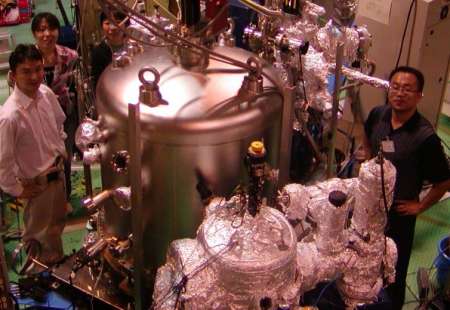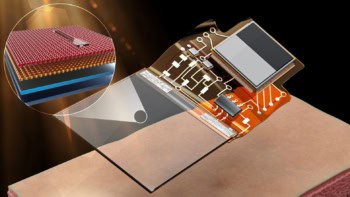
Researchers in Japan have used a new technique to measure the magnetic and electronic structure of subsurface atomic layers in a material for the first time. The technique, dubbed diffraction spectroscopy, will be crucial for understanding nanoscale magnetism and developing high-density “perpendicular” magnetic recording materials.
Future data storage densities will soon need to exceed one terabyte (1012 bytes) per square inch, requiring bits just 10 nm or less across. But this is the scale at which surface magnetism appears, so it is critical to understand whether there are any unusual magnetic effects.
Fumihiko Matsui and colleagues of the Nara Institute of Science and Technology and other Japanese institutions, combined two existing techniques to make theirs: Auger electron diffraction and X-ray absorption spectroscopy. They analysed “forward focusing” peaks that appear in the spectra along the directions of atoms on the surface of a sample. By examining the intensity of the peaks, they could distinguish the magnetic and electronic structures of individual layers (Phys. Rev. Lett. 100 207201).
Layer by layer
The researchers used their technique to analyse the magnetic structure of a thin film of nickel on a copper surface, an important material for magnetic data storage. Until now, the atomic magnetic structure of nickel thin films has been unclear, although scientists know that the magnetization axis in the films goes from being parallel at the material surface to being perpendicular at 10 atomic layers deep. Matsui and colleagues analysed this transition region and measured the magnetic moments in each individual layer.
Knowing exactly how these magnetic moments change throughout the structure could be useful for making perpendicular magnetic recording devices. Perpendicular magnetism should be capable of delivering more than triple the storage density of traditional longitudinal recording materials. This is because the magnetic particles can be packed closer together for greater density, which leads to more data per square inch.
Several diffraction techniques that image atomic structure already exist, but they have their drawbacks. Scanning tunnelling spectroscopy, for example, can only analyse the surface of a sample. The Japanese team’s diffraction spectroscopy technique can be used to visualize both magnetic and electronic properties of subsurface layers at the atomic scale in a non-destructive way for the first time. “Our technique makes it possible to focus on the subsurface region, which connects surface and bulk worlds,” Matsui told physicsworld.com.
The researchers are now extending their technique to analyse the surface of superconducting materials. “We are especially interested in correlating electronic properties and geometric structure at the superconducting phase transition,” says Matsui.



